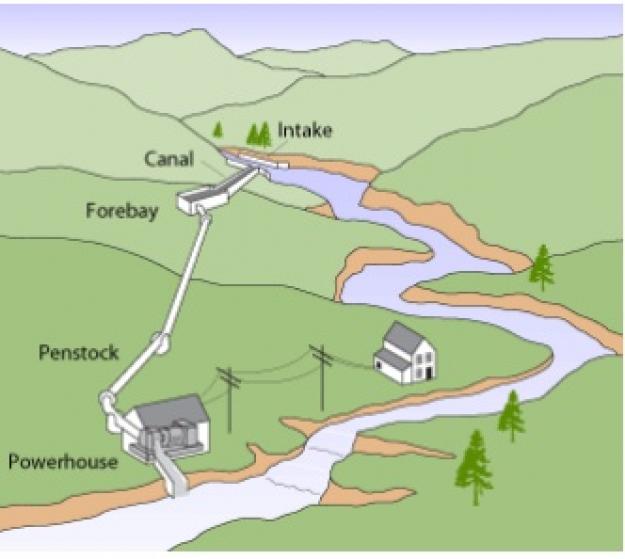In-River Hydro-kinetics
When rivers are utilized to produce electricity, that is usually accomplished by building some sort of hydroelectric dam, like the three we discussed earlier. It doesn’t have to be that way, however. Many of the technologies used to extract energy from the tides (or similar technologies) could be deployed in freshwater river systems rather than the saltwater ocean, effectively acting as very small run-of-river facilities. These “hydrokinetic” power generation systems are typically individually small (each generating about 100 kilowatts or less of power) and could be situated in two ways. First, a propeller-like or turnstile-like turbine could be deployed directly into the riverway, operating much like a small-scale tidal power system. Second, a “micro-hydro” type of system could be employed, where river water is channeled to a turbine housing via a channel or pipeline, as shown in the figure below.

